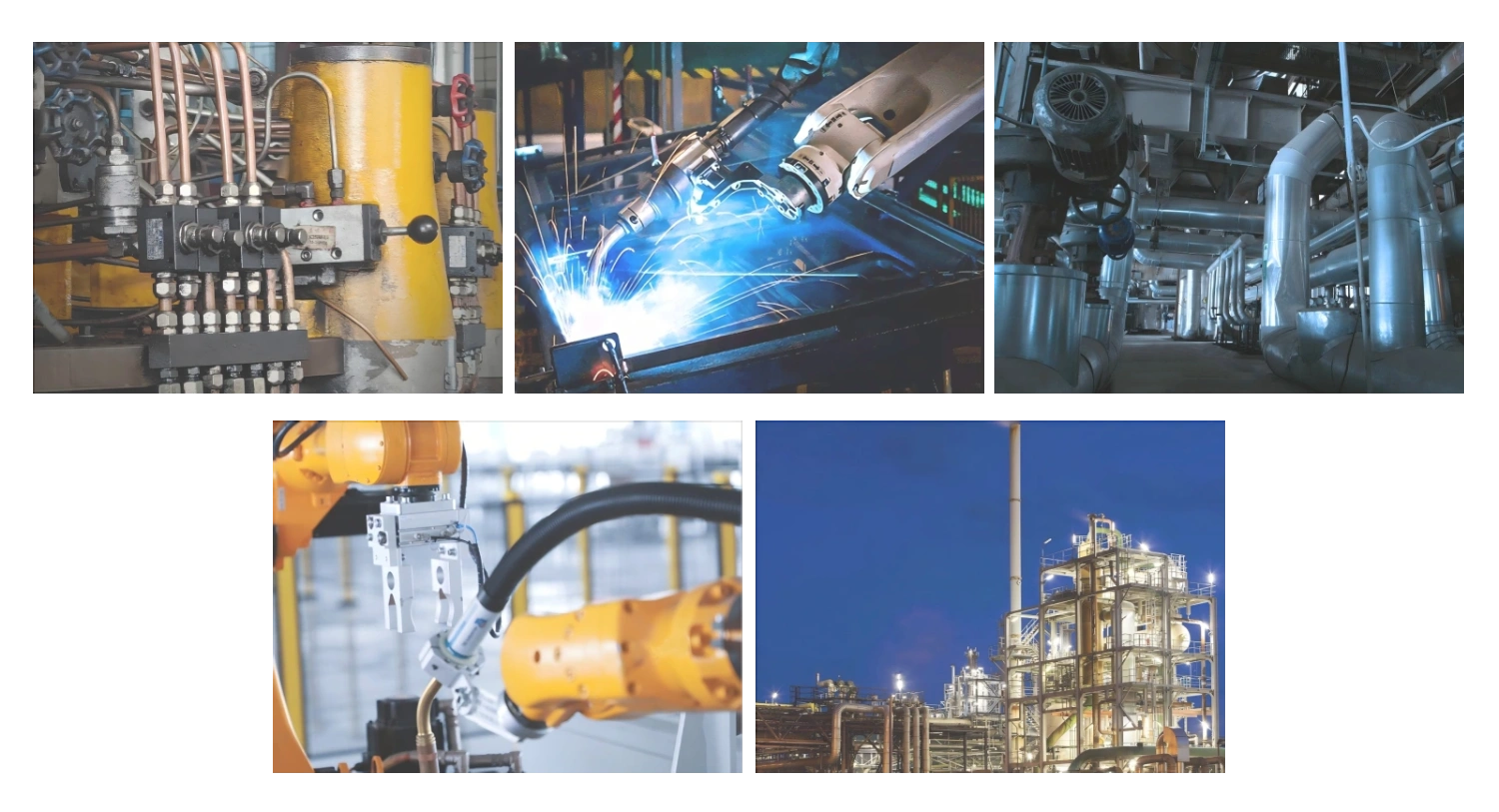Understanding Custom Molded Industrial Rubber Parts
What Are Custom Molded Rubber Components?
Molded rubber components come in all shapes and sizes, created specifically for whatever industrial challenge they need to solve. The manufacturing process involves creating molds that match exactly what's needed for each particular job, whether it's about the final shape or the exact material characteristics required. Choosing the right material matters a lot. Silicone works great when things get really hot, while fluorocarbons stand up well against harsh chemicals. Nitrile is another common choice because it handles oil and fuel so well. Standard rubber parts just don't cut it for many applications since they're made to fit everything and nothing at the same time. Custom parts give manufacturers real flexibility though. They can tweak hardness levels depending on how much pressure something will face, or change colors and finishes not just for looks but sometimes for safety reasons too. A good example would be automotive seals where softer compounds work better in some engine compartments than others.
Key Applications in Automotive and Machinery (Including Machine Auto Rubber Gaskets)
Custom molded rubber parts including gaskets and seals are really important for making cars run better. They stop leaks, cut down on annoying noises, and fill those pesky gaps where things shouldn't be leaking. Take engine gaskets for instance they keep everything sealed tight so engines perform well and last longer without breaking down. When it comes to big industrial machines too, these specially made rubber components make a big difference. They help reduce wear and tear while protecting against all sorts of tough conditions out there in the field. We've seen time and again how switching to custom rubber parts actually makes machinery work better, saves money on repairs, and extends how long equipment stays useful before needing replacement. The tricky part now is finding materials that can handle harsh chemicals and super high or low temperatures. This has pushed manufacturers to develop more specialized solutions rather than relying on standard off-the-shelf products. Getting this right means staying competitive in today's market while also meeting stricter regulations about safety and performance standards.
Materials and Manufacturing Techniques
Common Rubber Materials for Industrial Use
What kind of rubber gets chosen for industrial applications really matters when it comes to how well a product performs and lasts over time. Natural rubber, neoprene, and silicone are among the most common options out there, but they all bring different strengths to the table. Take natural rubber for example it bends and stretches without breaking, making it great for things that need movement. Neoprene stands up pretty well against both heat and harsh chemicals, so factories often go for this one in tough environments. And then there's silicone, which handles extreme temperatures better than most materials around. Each type works better in certain situations depending on what the application requires. When companies shop around for these rubbers, quality should definitely be at the top of their list because good quality means longer lasting parts and fewer headaches down the road. Sustainability matters too though, as more businesses realize that getting rubber from responsible sources helps cut down on environmental damage something that customers care about more now than ever before.
Rubber Injection Molding vs. Rubber Gasket Cutting
Rubber injection molding has become pretty much standard for making complex parts that need precision and efficiency. What makes it stand out? Well, it just plain works faster than most alternatives and can handle those really complicated shapes that other methods struggle with. On the flip side, many companies still turn to rubber gasket cutting when they need something straightforward or want maximum flexibility in their designs. Different industries pick different approaches depending on what they need. Take cars and heavy machinery manufacturers, they usually go with injection molding because it handles large volumes of intricate components so well. Meanwhile, businesses needing adaptable gaskets that fit specific applications often find cutting makes more sense. Cost matters too obviously, along with how complicated the part needs to be and whether the material will hold up over time. Getting this decision right really affects if a product stands a chance in the market or not.
Optimizing Processes with Used Rubber Injection Machinery
Buying secondhand rubber injection machines helps save money on production without compromising product quality. When companies choose to refurbish instead of replace, they get two benefits at once: longer machine life and improved performance. The actual refurb work usually involves replacing worn-out components, installing newer controls, and sometimes adding features that weren't available when the machine was first made. A lot of different sectors now run their operations with remanufactured equipment. Take small manufacturing shops for instance many of them rely on this approach just to stay in business against bigger competitors. With environmental concerns growing stronger every year and tech improvements happening constantly, more businesses are finding value in giving old machines new life rather than always going for brand new purchases.
Machinery Considerations for Rubber Part Production
Types of Rubber Injection Molding Equipment
For anyone involved in manufacturing rubber components, knowing what kind of injection molding equipment exists really makes a difference in how well things run. There are basically two main categories out there: hydraulic systems and electric models. Each has its own strengths worth considering. Hydraulic presses pack quite a punch when it comes to clamping power, which is why they tend to dominate production lines where big parts need shaping. Electric alternatives bring something different to the table though. They're much better at maintaining tight tolerances and generally consume less electricity, so many shops turn to them when working on intricate designs or tiny details. Picking between these options isn't just about size either. Shops have to think about how many units they plan to produce each month and exactly what sort of geometry their products require. And then there's always that age old question: buy brand new gear or look at second hand options? The answer varies wildly depending on cash flow situation and long term maintenance plans.
Cost Benefits of Refurbished Machinery
Buying used rubber molding machines instead of brand new ones saves money in a big way. Industry data shows businesses typically cut costs by around half when they go for refurbished equipment, which means better returns on their investments. Plenty of manufacturers have made smart moves by opting for these secondhand options to get more done without breaking the bank. But before jumping into any purchase, there are some important things to check out. Look at what kind of warranty comes with the machine, whether technical help is readily available, and how easy it will be to maintain over time. Smart buyers know that saving cash shouldn't come at the expense of having reliable operations day after day.
Maintenance Best Practices for Long-Term Use
The life span of rubber production machines really depends on how good the maintenance practices are. When companies take proactive steps like checking equipment regularly and doing service work before problems pop up, they usually see better performance and way less downtime than those who wait until something breaks down. Quality tools matter a lot here, along with sticking to proper maintenance procedures. Think about basic things that make all the difference - keeping moving parts properly lubricated, making sure everything stays clean, and swapping out components that show wear and tear before they fail completely. Industry experience shows that businesses which establish solid maintenance routines tend to have far more reliable operations overall. The machines just last longer without surprise breakdowns that disrupt production schedules.
Quality Assurance and Partner Selection
Critical Quality Metrics for Industrial Rubber Parts
Quality matters a lot when we talk about industrial rubber parts, and there are some basic things we need to check. The main ones? Hardness tests, how strong the material pulls apart (tensile strength), and how much it stretches before breaking (elongation). Following industry standards like ISO and ASTM isn't just paperwork either these standards actually set the bar for what good quality really means across different products. Testing doesn't stop once production starts either manufacturers keep checking throughout the whole process so nothing slips through the cracks. Take automotive gaskets for instance their tensile strength determines whether they'll hold up under pressure or fail catastrophically. That's why companies spend so much time on quality control nobody wants to see rubber parts failing in critical systems.
How to Evaluate Custom Manufacturing Partners
Finding a good custom manufacturing partner makes all the difference when it comes to getting projects done right. Look at what certifications they have first off, stuff like ISO 9001 shows they take quality seriously. Experience matters too. A company that has been around for years working on similar products will probably handle special requests better than someone new to the game, particularly when deadlines start tightening up. Good relationships with suppliers aren't just nice to have either. When both sides talk openly and build some level of trust over time, things tend to run smoother and the final product stays consistent. Don't forget to check out what others are saying about them online. Real feedback from past clients gives a pretty clear picture of whether this partner actually delivers what they promise or if they're just talking big.







